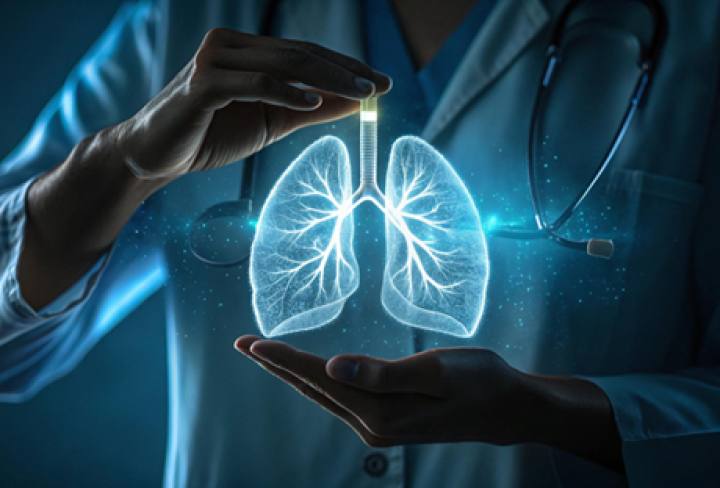Pulmonary sarcoidosis is a condition affecting many people worldwide and is a significant public health concern. It primarily involves the lungs, leading to various health complications. Awareness and understanding of this disease are crucial for its early detection and management. Spotting it early can make a big difference in treatment outcomes and help manage the condition more effectively.
Demystifying Pulmonary Sarcoidosis
Pulmonary sarcoidosis is when small lumps of inflammatory cells form in the lungs. These lumps interfere with the lungs’ ability to function properly, reducing their effectiveness in oxygen exchange. This can lead to difficulties in breathing and other respiratory issues. Understanding this disease helps in recognizing its impact on lung function and encourages individuals to seek medical advice if they notice symptoms related to their lungs.
Unearthing Causes and Risk Factors
The exact cause of pulmonary sarcoidosis remains uncertain, but researchers believe it’s triggered by environmental and genetic factors. Exposure to certain substances, like dust or chemicals, might contribute. There’s also a possibility that individuals with specific genetic backgrounds are more prone to developing this condition. Certain demographic factors play a role too. For instance, sarcoidosis is more common in people aged between 20 and 40. Gender and ethnicity can influence risk, with some studies suggesting that women and African Americans might have a higher chance of developing it. Understanding these factors assists in the early identification and prevention of the disease.
Recognizing the Symptoms of Sarcoidosis in the Lungs
Sarcoidosis of lung symptoms can vary widely among individuals. Common respiratory symptoms include:
- Persistent cough that doesn’t go away easily.
- Breathlessness or difficulty in breathing, even during mild activities.
General symptoms that might accompany sarcoidosis lung issues are:
- Fatigue, where you always feel tired.
- Fever without any apparent reason.
In some rare cases, symptoms might extend beyond the lungs:
- Skin rashes, which are noticeable in different body parts.
- Eye issues, such as redness or pain.
Recognizing these symptoms is key to seeking timely medical intervention. If familiar symptoms appear, consulting a healthcare provider is advised.
Diagnosis: Steps to Unveiling Pulmonary Sarcoidosis
Diagnosing pulmonary sarcoidosis involves a series of tests and procedures. Doctors often recommend imaging tests like chest X-rays or CT scans to spot unusual lung changes. Sometimes, a biopsy is necessary to confirm the diagnosis. This procedure helps in getting a clearer picture, which is essential for accurate detection. Knowing these steps guides patients in understanding what to expect during the medical evaluation process.
Modern Treatment Paradigms for Pulmonary Sarcoidosis
In some cases, a “watchful waiting” approach may be appropriate, where doctors monitor the condition without immediate treatment. However, when the symptoms are more pronounced, medical intervention becomes necessary. Common medications include corticosteroids, which reduce inflammation. Other options might involve immunosuppressants to manage the immune response. Besides medication, lifestyle adaptations play a vital role in treatment. Avoiding smoking and maintaining a healthy weight can improve outcomes. Holistic strategies, like engaging in gentle exercise and stress management, support overall lung health. These approaches collectively aim to enhance the quality of life for those affected by sarcoid disease lung conditions.
Assessing Prognosis and Long-term Considerations
With pulmonary sarcoidosis, many patients experience remission, where symptoms improve or disappear over time. However, there’s always a possibility of recurrence, especially if the disease wasn’t fully controlled initially. Long-term impacts might require lifestyle adjustments, focusing on enhancing quality of life. Understanding these factors helps patients and their families prepare for the journey, emphasizing the importance of regular medical check-ups and proactive health management.
Thriving with Pulmonary Sarcoidosis: Living a Full Life
Living with pulmonary sarcoidosis brings challenges, yet many manage to lead fulfilling lives. Coping strategies include practicing mindfulness and stress relief methods like yoga or meditation. Connecting with support networks offers emotional and practical support. Exploring resources online or through patient groups can also be useful. Additionally, a balanced diet and regular exercise are crucial in managing symptoms and promoting well-being. These efforts ensure that those with sarcoid disease lung conditions do not feel alone and are equipped with strategies to handle their health positively.
Conclusion: A Call for Awareness and Action
In summary, it is essential to understand the basics of pulmonary sarcoidosis, especially if you suspect having symptoms. Seeking advice from medical professionals can lead to timely intervention and improved health outcomes. It’s important to take proactive steps towards healthcare, ensuring early detection and treatment.

